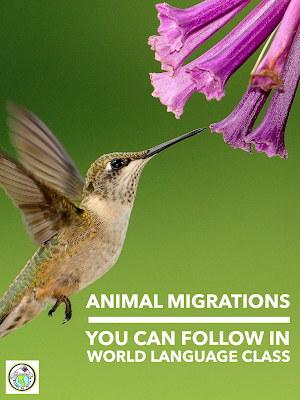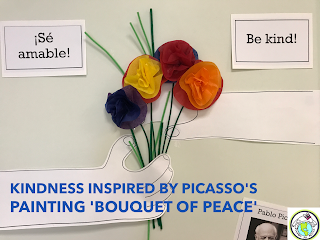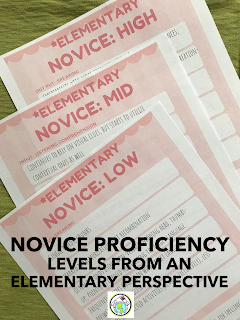*RUBY THROATED HUMMINGBIRD: Here at my house in Maine we have a pair of hummingbirds that visit our garden all through the summer, a joy to behold! These tiny birds make their nests here in the north, and then, when fall comes, just like the monarch butterflies, they head south- but they fly all the way to Central America to over winter. You can track the migration at Journey North here! Don't forget to teach Sun sun ba ba e as part of any lesson on hummingbirds- a great authentic song! Here is Celia Cruz on Sesame Street:
and for French class, here's a beautiful rendition of Do, re, mi, which incorporates a hummingbird:
*GRAY WHALES (Las ballenas grises): Gray whales spend the summer in the arctic waters off of Alaska and Canada, but come fall, they head down to the warmer waters off the Pacific coast of México. Journey North provides information on their migration, too (getting a sense that I love Journey North?!) Click here for JN. As well, here is a lovely video about the sanctuary in México
Para información sobre la ballena gris en español, se puede ver esta página!
Here's the link to all of Journey North's maps on one page- click here.
*MOVEBANK is a new app that allows you to track animals on your phone! If you are able to hook into an Apple TV to show the maps to students-great! If not, you can take screen shots and project them once you've emailed them to yourself.
*SMITHSONIAN MIGRATORY CONNECTIVITY PROJECT- live tracking maps of a few bird species which visit Central America, including the Black Crowned Night Heron
For more migration tracking:
*Cuckoo Migration to Africa
*World Wildlife Fund Animal Tracker- features animals such as turtles, polar bears, narwhals, jaguars, and more!
*Smartmine Whale Tracker- tracking whales near Hawaii
*National Geographic Tracker- various species can be tracked here
*Monarch Butterfly Migration at Journey North
To see how I track Monarchs in my 2nd grade classes, visit this post!





















